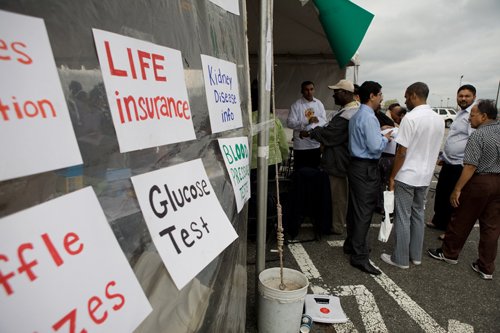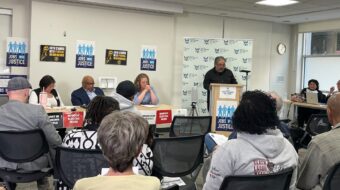
NEW YORK – Workers’ centers, or non-traditional unions, have scored significant victories here lately.
The Domestic Workers Union was able redress a historic grievance by helping push through a law ensuring that domestic workers – nannies, housecleaners, maids, butlers – were afforded all the rights that most other workers won in 1935 with the passage of the National Labor Relations Act.
The Taxi Workers Alliance was able to get the state Legislature to pass a bill that would impose strong penalties on anyone who assaults a cab driver. That would put the taxi workers the alliance represents on a par with Metropolitan Transportation Authority workers, who already enjoy such protection. Unfortunatley, though the bill was passed nearly unanimously, Gov. David Paterson, citing a technicality, vetoed it.
These and other developments led Crain’s New York to note last month that workers’ centers are an important new development in the labor movement, both here and nationally.
Domestic Workers United Executive Director Priscilla Gonzalez told the People’s World, “The labor movement is looking to the workers’ centers because these workers are thousands and thousands and thousands in their organizing.” She added that there are well over 200,000 domestic workers in the New York City area alone.
Workers centers fill a need where traditional unions have not yet been able to gain a foothold, and they are, many say, important to the future of the labor movement overall.
According to Janice Fine, writing on the AFL-CIO website, workers’ centers provide “ways to offer meaningful membership in the labor movement to low-wage workers whose employers are not traditional union targets.”
Partnerships between traditional organized labor and the workers’ centers have become common. The Taxi Workers Alliance, for example, has been welcomed as a member of the New York City Central Labor Council. These formal alliances often turn practical, says Gonzalez.
“The doormen [represented by SEIU Local 32BJ] are the gatekeepers to the Park Avenue buildings where our members work, so they know where the good employers are and the bad employers,” she said.
When domestic workers first began to organize the fight for full rights, 32BJ workers helped the Domestic Workers Union reach out to domestic workers. “We gave them our outreach cards and they distributed them to the domestic workers in our buildings,” Gonzalez said.
Those organized by the workers’ centers are generally in situations that make organizing particularly difficult: they are generally the worst off with the least job security, often working as “private contractors.” This workforce is overwhelmingly immigrant, people of color and women.
The demographics mean that a special kind of organizing is required. The approach is “holistic” in many of these centers, including everything from fighting for better working conditions to addressing workers’ immediate survival needs, such as provision of childcare and health services, and also raising wider public policy issues.
“The workers that we organize have existed at the intersection of several different crises, rooted in globalization, racism, sexism and neoliberal economic policies,” said Gonzalez.
Given the international nature of this workforce, she said, “We’ve built these models of organizing taking from the history of resistance in the United States, but also histories of resistance from the global South, from different liberation struggles, and have applied those lessons learned to the kind organizing that we’re doing here in the U.S.”
Changing conditions have brought together former opponents. Laborers Union Local 10 used to consider day laborers adversaries with whom it was necessary to compete for jobs. However, in recent years, the local has started to actually help these workers in their organizing efforts.
Some have suggested that the new organizing methods employed by the workers’ centers will help reenergize and rebuild the labor movement. The AFL-CIO agrees. In 2006 it set up a standard procedure for local workers’ centers to officially affiliate with state federations and local labor councils. Alliances are being built at the national level as well, most notably the recent team-up between the AFL-CIO and the National Day Laborers Organizing Network.
Gonzalez is looking forward to further cooperation with the traditional labor movement and “working with each other as well as with the established labor movement, to bring the labor laws of this country into the 21st century to address the realities of today’s workers.”
Photo: A workers’ health fair organized by the New York Taxi Workers Alliance. http://www.nytwa.org/press/photos











